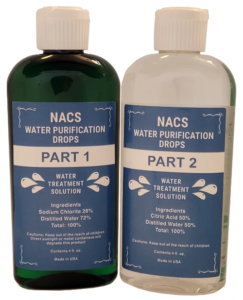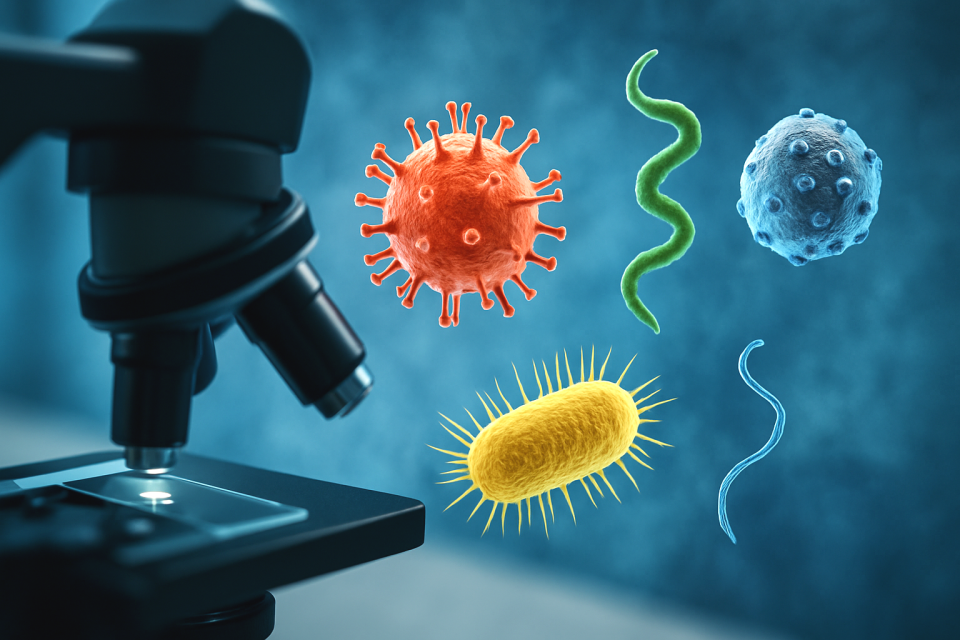In the ever-evolving field of health and wellness, the search for effective remedies against viruses, bacteria, fungi, and parasites remains a top priority. Among the many solutions explored, chlorine dioxide (ClO₂) stands out as a potent antimicrobial agent with a unique ability to target harmful pathogens while sparing healthy human cells. Originally used in industrial applications such as water purification and sanitation, chlorine dioxide has gained attention for its reported benefits when used internally in controlled amounts.
What Is Chlorine Dioxide?
Chlorine dioxide is a gaseous compound composed of chlorine and oxygen. Unlike elemental chlorine, which can be harmful in high concentrations, chlorine dioxide acts as an oxidizer that selectively targets and destroys harmful microbes. This makes it a valuable tool for eliminating waterborne pathogens and has led to its adoption in municipal water treatment systems, food sanitation, and even anthrax decontamination efforts.
The discovery of its potential health benefits, however, came into focus largely through the work of Jim Humble, who developed a method to safely activate and consume chlorine dioxide in controlled doses. His formulation, known as MMS (Master Mineral Solution), has been used by thousands of individuals who claim to have experienced remarkable improvements in their health.
How Chlorine Dioxide Works in the Body
The human body is naturally equipped with an immune system that utilizes heat, white blood cells, and various biochemical processes to fight off infections. However, when an overload of pathogens occurs, the immune system can become overwhelmed. This is where chlorine dioxide is believed to provide significant support.
1. Selective Oxidation of Pathogens
Unlike traditional antibiotics that indiscriminately kill bacteria (both good and bad), chlorine dioxide works through a process called selective oxidation. When introduced into the body, it seeks out pathogens, including:
- Viruses
- Harmful bacteria
- Parasites
- Fungal infections
- Heavy metals and toxins
Pathogens typically have acidic surfaces and an electron-donating nature, making them susceptible to oxidation. Chlorine dioxide strips electrons from these harmful invaders, effectively destroying their cellular structures. Once the pathogen is neutralized, the immune system can safely eliminate the remains through the liver and kidneys.
2. Minimal Impact on Healthy Cells
One of the key benefits of chlorine dioxide is that it does not indiscriminately damage healthy cells. Unlike aggressive oxygen therapies that can harm living tissues, ClO₂ only reacts with low-pH (acidic) materials, which are characteristic of pathogenic microbes. This property ensures that it does not interfere with beneficial bacteria in the gut or disrupt essential bodily functions.
3. Detoxification of Heavy Metals
Another reported benefit of chlorine dioxide is its ability to bind to heavy metals like mercury, lead, and aluminum, helping to remove them from the body. Since heavy metal toxicity is linked to numerous chronic conditions, some individuals have used MMS as a detoxification aid to support overall well-being.
4. Potential Role in Autoimmune and Chronic Illnesses
Many chronic illnesses, including Lyme disease, autoimmune disorders, and viral infections such as HIV, have been linked to persistent pathogen overloads. Some proponents of chlorine dioxide therapy suggest that by reducing the pathogenic burden in the body, the immune system is better equipped to restore balance and function optimally.
Historical Context and Comparison to Other Therapies
Throughout history, various antimicrobial and immune-boosting treatments have been used to combat disease. Prior to antibiotics, silver solutions, sulfa drugs, herbal extracts, and heat therapy were common remedies. Chlorine dioxide aligns with these traditional approaches but offers a unique advantage: it is highly effective in small doses while being gentler than direct oxygen therapies like ozone.
For example:
- Ozone (O₃) therapy has been used in some clinics to oxygenate tissues and kill cancer cells, but it is highly reactive and can cause cellular damage if not administered correctly.
- Hydrogen peroxide (H₂O₂) is another oxidative therapy, but it can be overly aggressive, damaging healthy cells alongside harmful microbes.
- Chlorine dioxide, by contrast, provides a measured oxidative effect that is strong enough to eliminate pathogens but mild enough to avoid harming healthy tissue.
How to Use Chlorine Dioxide Safely
The standard protocol for using MMS involves using a two-part kit for mixing sodium chlorite with an acid activator (such as citric acid or lemon juice) to generate chlorine dioxide gas. This gas is then diluted in water before being consumed.
Basic MMS Protocol
- Mix one drop of Part 1 sodium chlorite solution with one drop of Part 2 citric acid solution (or another activator).
- Let the mixture activate for about three minutes until it turns yellow, indicating the release of chlorine dioxide gas.
- Add water to dilute the solution before drinking.
- Start with a low dose (one drop per day) and gradually increase based on tolerance.
Precautions and Considerations
- Slowly increase dosage to avoid Herxheimer reactions (detox symptoms like nausea or diarrhea).
- Stay hydrated to help the body flush out toxins.
- Avoid high doses, as excessive oxidation may cause discomfort.
Scientific and Clinical Considerations
Despite anecdotal evidence and reported health benefits, chlorine dioxide has faced controversy and regulatory restrictions in some countries, particularly in the United States. Critics argue that more clinical studies are needed to confirm its safety and effectiveness for internal use. However, proponents point to Germany and other countries, where heat-based therapies and oxidative treatments have been explored for cancer and immune support.
A Promising Tool for Immune Support
Chlorine dioxide presents an intriguing alternative for those seeking natural and effective ways to combat infections, detoxify the body, and support immune function. While mainstream medical acceptance remains limited, thousands of individuals worldwide continue to report positive experiences with MMS.
As with any alternative health practice, individuals should conduct their own research, consult knowledgeable practitioners, and proceed with care. The potential of chlorine dioxide as a targeted pathogen eliminator makes it a compelling subject for further exploration, and its role in holistic wellness may yet be more widely recognized in the future.




